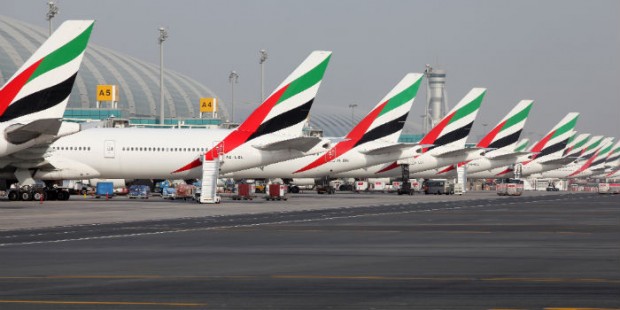Middle East carriers post strongest annual passenger traffic growth in 2014
By admin Saturday, 07 February 2015 2:45 PM

February 6, 2015
Dubai: The International Air Transport Association (IATA) announced on Friday that the Middle East carriers had the strongest annual passenger traffic growth of13 per cent in 2014.
“The region’s economies continue to show robust growth in non-oil sectors, and are therefore well-placed to withstand the plunge in oil revenues. Capacity rose 11.9 per cent and load factor climbed 0.8 percentage points to 78.1 per cent,” IATA said in a statement.
The global passenger traffic results for the full year of 2014 showed demand (revenue passenger kilometres or RPKs) rose 5.9 per cent compared to the full year of 2013. This 2014 performance was above the 10-year average growth rate of 5.6 per cent and the 5.2 per cent annual growth experienced in 2013 compared to 2012.
“Demand for the passenger business did well in 2014. With a 5.9 per cent expansion of demand, the industry outperformed the 10-year average growth rate. Carriers in the Middle East posted double-digit growth while results in Africa were barely above previous-year levels,” said Tony Tyler, IATA’s Director General and CEO.
Global air passenger capacity rose 5.6 per cent last year, with the result that load factor climbed 0.2 percentage points to 79.7 per cent. All regions saw demand grow in 2014. More than half of the growth in passenger travel occurred on airlines in emerging markets including Asia-Pacific and the Middle East. In recent months domestic market growth played a large role in driving growth. This is owed mainly to a pickup in Chinese domestic travel which expanded by some 11 per cent in 2014 over the previous year.
“Overall a record 3.3 billion passengers boarded aircraft last year — some 170 million more than in 2013. While it is clear that people will continue to travel in growing numbers, there have been signs in recent months that softening business confidence is translating into a levelling off of international travel demand,” said Tyler.
International passenger traffic rose 6.1 per cent in 2014 compared to 2013. Capacity rose 6.4 per cent and load factor slipped 0.1 percentage points to 79.2 per cent.
Asia Pacific carriers recorded an increase of 5.8 per cent compared to 2013, which was the largest increase among the three biggest regions. However, traffic has been broadly flat over the past four months or so amid signs of a slowdown in regional production activity, although trade volumes have remained strong. Capacity rose 7 per cent pushing down load factor 1.1 percentage points to 76.9 per cent.
European carriers’ international traffic climbed 5.7 per cent in 2014. Capacity rose 5.2 per cent and load factor rose 0.6 percentage points 81.6 per cent. Robust travel on low fare airlines as well as airlines registered in Turkey offset economic weakness and risks in the region.
North American airlines saw demand rise 3.1 per cent in 2014 over 2013. Among developed economies, the US is the standout performer. Capacity rose 4.6 per cent, dropping load factor 1.1 percentage points to 81.7 per cent.
In Latin America traffic rose 5.8 per cent with capacity up by 4.7 per cent. African airlines experienced the slowest annual demand growth, up 0.9 per cent compared to 2013. With capacity up 3 per cent load factor fell 1.5 percentage points to 67.5 per cent.




























Add new comment